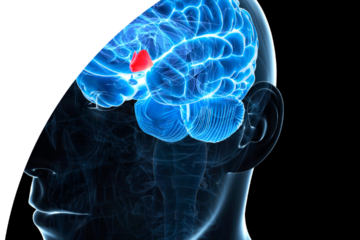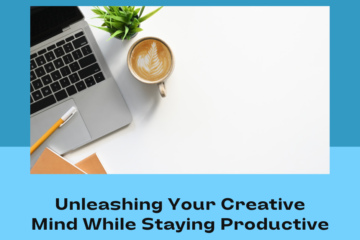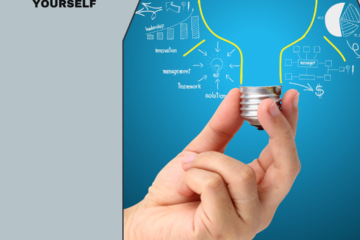
Introduction:
Among the many complex ways that people think, decision-making is one of the most interesting. Two important forces are at the center of this process: feeling and logic. These forces have been the subject of philosophical arguments, scientific investigations, and everyday thoughts for as long as people can think. People often wrap their intuition in mystery. Intuition is the world of gut feelings and automatic reactions. That quiet push, that whisper from the subconscious, leads us down a certain road. On the other hand, logic is an organized and analytical powerhouse. It thrives on facts, logical thinking, and conclusions that are easy to understand.
Some people find comfort in the immediate and emotional power of intuition, while others find stability in the orderly precision of logical thinking. However, they are not mutually exclusive, no matter how different they may seem. In fact, the most important choices are often made when these forces work together in a balanced way. So, instead of seeing them as rivals in a mental tug-of-war, could the key to making the best decisions be to see how they work together and combine their strengths? Let’s go on an adventure to find out how these two old friends can work together to get better results.
Intuition: Delving Deeper into the Power of the Gut

When it comes to making decisions, intuition often acts as our inner guide, showing us the way even when it’s not perfectly clear at first. What is this mysterious force that we call intuition?
Understanding Intuition
Intuition is more than just a simple “gut feeling.” It’s a complex mental process that is made up of our memories, feelings, and new information. Imagine going into a room and feeling uneasy right away, or meeting someone and trusting them right away, even though you don’t know why. These responses come from intuition, which is a storehouse of our unconscious knowledge.
Pros:
Speed: One of the best things about making decisions intuitively is that you can do it right away. When time is of the essence, like in an emergency or when you have to make a quick decision, it might not be possible to wait for a full study. In this case, our gut acts as a quick-response system, pushing us to act quickly.
Experience-Based: It’s not just a voice in our heads telling us what to do; it has deep roots in our past. Every experience, every success or failure, and every observation shapes our intuitive reactions in small ways. It’s like an internal library that quickly looks up past events to help make decisions about the present. This collection of all the lessons we’ve learned in life often gives us insights that a data-only method might miss.
Cons:
Bias-Prone: A double-edged sword, the fact that intuition is based on experience also makes it open to biases. In the end, personal situations are subjective. Our societal backgrounds, personal biases, and emotional states all have an effect on them. For example, someone who has been betrayed in the past might be too cautious and not trust even real chances.
Lacks Analysis: If you want to be quick, intuition is great, but it often lacks the depth and width of a thorough analytical approach. If you only make decisions based on your gut thoughts, you might miss important information or different points of view. That’s like looking at something through tunnel vision, where important features in the edges are blurred out.
Intuition is a strong force that shows us what’s going on inside our minds. It is the voice of all the things we’ve done and learned, echoing lessons from the past. But for a well-rounded way to make decisions, this voice needs to be matched with the sharpness and clarity of logic.
Logic: The Pillar of Precision in Decision-Making

In the vast landscape of making decisions, intuition is like a compass, and reasoning is like a map that shows us the way. The methodical, organized way of doing things helps us make decisions based on facts and well-organized thinking.
Figuring Out Logic
Logic is the skill of being able to think clearly at its core. It’s about coming to conclusions that make sense based on the facts or ideas you’re given. This analytical anchor makes sure that our choices aren’t just gut feelings, but well-thought-out responses based on a structured review.
Pros:
Evidence-based: Logical decision-making is based on facts and data that can be seen and touched. Logicians demand proof before they believe something, not just their thoughts or gut feelings. They look closely at the numbers and information and make decisions based on facts that can be checked. This method makes it much harder to make mistakes or miss something, so choices are based on facts.
Structured: Logical choices are made in a planned way. They make a clear case for going from point A to point B in a way that makes sense. This methodical approach not only makes things clearer, but it also makes it easier to defend choices that make sense. People who have used logic can easily explain each step of their thought process that led to their final choice when they are questioned or challenged.
Cons:
Time-consuming: It takes time to be precise. Making decisions based on data can be very strict, especially when there is a lot of data to look at. Each step in the logical decision-making process can take a lot of time: gathering data, analyzing it, and weighing all the possible outcomes. This slow, methodical pace might get in the way when quick actions are needed.
Can Miss Nuances: Life isn’t always black and white because of all the feelings, connections, and things that can’t be seen or touched. Sometimes, decisions that are only based on logic miss these shades of gray. For example, a manager might decide not to pay for an employee’s training based only on how much it would cost, losing out on the long-term benefits of loyalty, morale boost, or the intangible value of human growth.
In conclusion, reasoning is a bright light in the often rough waters of decision-making. It makes sure that the decisions we make are well-thought-out, logical, and based on facts. But to really understand the depth and width of a situation, this analytical base needs to be paired with the deep understanding that intuition gives.
Marrying Intuition with Logic: Crafting a Symphony in Decision-Making

When you look at the big stage of thought, decision-making is a show with many parts. Intuition and logic are the two main players in this show. Each has its own pros and cons when used by itself. But when they work together, they can make a beautiful symphony that helps people make smart, fair choices. Here’s a detailed look at how to put these parts together to make a plan that works.
1. Initial Reaction: The Voice of the Subconscious
Every journey of making a choice starts with a natural spark. We often get our first clues from our subconscious mind. It could be a gut feeling, an inkling, or a strong response. When someone says, “feels right” or “feels wrong,” they are making an instant decision.
For example, when you think about a job offer, your gut might tell you to be excited or nervous right away. It’s important to recognize and understand these first responses because they can reveal beliefs, fears, or desires that are deeper down.
But even though gut can give you quick answers, it’s important to remember that it’s only the beginning. For a well-rounded decision-making process, it’s important to validate these gut feelings.
2. Data Collection: The Foundation of Informed Choices
Because my gut told me to, it’s time to put on the study hat. Here, reason is given the most weight. In this step, you gather all the facts, statistics, evidence, and information that is relevant to the choice you are making.
Let’s say you’re thinking about moving for a job. To gather data, one might look into the cost of living in the new city, read reviews to learn about the company culture, look at growth possibilities, and even look at lifestyle factors like local amenities or the vibe of the community.
When you base your decision-making on real facts, you create a stable base where logic and intuition can interact in a meaningful way.
3. Compare and Contrast: The Dance of Synthesis
Now that you have both intuitive reactions and logical facts, the next step is to put them together. Does your gut feeling match up with the facts? Or is there a disagreement?
For instance, it’s important to look into something further if your gut tells you to be wary of a job offer but reasonable analysis shows it’s a great chance. Are they afraid because they really care or because they don’t like change? On the other hand, if your gut tells you to make a move but the facts don’t back it, there may be risks or details you haven’t seen.
This stage is about making sure that the mind and the heart work together well and that neither one takes over the other.
4. Seek Feedback: The Prism of Perspectives
Our views are naturally restricted, no matter how self-reflective or analytical we are. Asking for feedback from outside sources adds new information to the decision-making table.
Talking about the choice with trusted friends, teachers, or peers can help you understand it better. It’s possible that they will show you biases you weren’t aware of, give you new ways to look at things, or even confirm what you already feel.
However, outside views are very helpful, but it’s important to use them as tools instead of rules. In the end, it is the person who makes the choice.
5. Reflect: The Final Act of Balance
Before the decision-making show, there needs to be some time to think about what happened. Now is the time to take a step back, stop being so focused on the present, and look at the bigger picture.
Ask yourself if you’re letting your emotions get the best of you and letting your gut rule your decisions. Or am I getting stuck because I have too much info to look at?
Reflection makes sure that the choice is conscious, deliberate, and well-thought-out, no matter how much it leans toward reasoning or intuition. It’s the last checkpoint that makes sure the path from gut feeling to practical choice is smooth, fair, and well-informed.
To sum up, making decisions isn’t just a matter of picking between gut and logic. Instead, it’s a complex dance, a fine balance between recognizing our inner thoughts and making sure they are true based on outside facts. People can make choices that are not only good for them but also deeply connected to their values and how they see the world by combining these forces. Putting intuition and logic together is not just a plan, it’s also a way of thinking about how to make decisions that will last.
In Practice: A Confluence of Intuition and Logic in Business Decisions
Once in a while, business leaders reach a decision-making point where the outcome could affect the future of their company. The choice to release a new product is one of these important moments. Let’s look more closely at how the smooth mixing of intuition and logic can change this process so that both the passion of gut and the accuracy of analysis are respected.
The Intuitive Spark: Recognizing Market Gaps
A great product usually starts with an idea that comes from a gut feeling that there’s a need that isn’t being met or a gap in the market. For a seasoned business leader, this gut feeling isn’t just a whim; it comes from years or even decades of interactions, successes, and mistakes in the field.
When this leader walks into a store or looks at something online, they might feel like something is missing right away. Or, during a chat with a customer, a comment that was meant to be funny might hit a nerve and lead to a new idea. This well-honed intuition can spot possible goldmines before any hard data goes in that direction.
The Logical Deep Dive: Validating the Hunch
But while intuition can help you spot opportunities, starting a product based on it alone is like going sailing in uncharted waters without a map. Now comes logic.
Once an idea for a product comes to mind, the next step is to do a lot of study on the market. Who are the people you want to reach? How big is the possible market? What are the main trends, and how do you think they might change?
Also, it’s very important to know who your competitors are. Are there other items like this? If so, how big is their part of the market, and what makes them different? It’s important to find a unique selling proposition (USP), which can only be done through a careful, logical analysis.
Another reasonable part is figuring out the risk. Every time a new product comes out, there are risks, whether they are financial, social, or operational. Figuring out how big these risks are, maybe through scenario planning or SWOT analysis, helps make sure that the choice to move forward is a good one.
Synergy in Action: Crafting an Informed Strategy
Because logic has supported the intuitive idea, the business owner is now in a strong position. They have a strong trust in the product that is based on facts and data.
This two-pronged method gives them the tools they need to make a complete launch plan. The intuitive understanding could help guide the brand message, appealing to the emotional or aspirational parts of the audience that the leader knows will connect with them. The logical analysis, on the other hand, will determine the practical aspects, such as pricing strategies, methods of distribution, marketing budgets, and so on.
Also, problems can be seen coming and dealt with before they happen by using both insight and logic. While intuition can help you guess when the market might be hesitant, logical analysis can help you come up with backup plans.
Conclusion:
The decision-making process is a complex one that requires a harmonious combination of intuition and logic. The heart represents our intuition, which is influenced by our experiences, emotions, and beliefs. It guides us towards choices that align with our authentic selves and make logical sense. The head, symbolizing logic, provides a structured framework for our decisions, offering clarity, precision, and evidence-based reasoning. However, the fusion of these two forces creates truly informed decision-making. This blend ensures choices resonate with our values while being practical, while in the business world, it fosters innovative ideas rooted in instinct. By inviting both our heart and head to the table, we can make decisions that not only achieve desired outcomes but also reflect our human experience. This harmonious interplay is the true art and science of making informed choices.



0 Comments